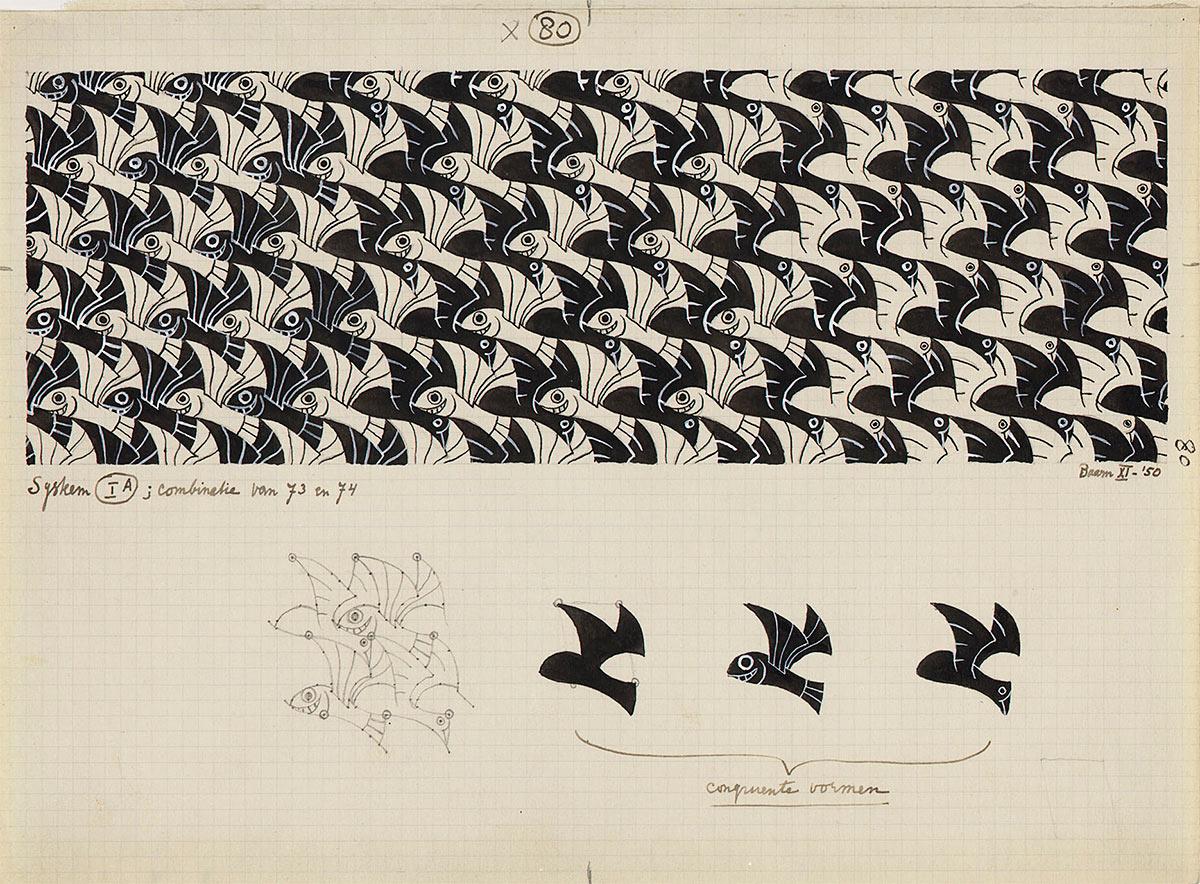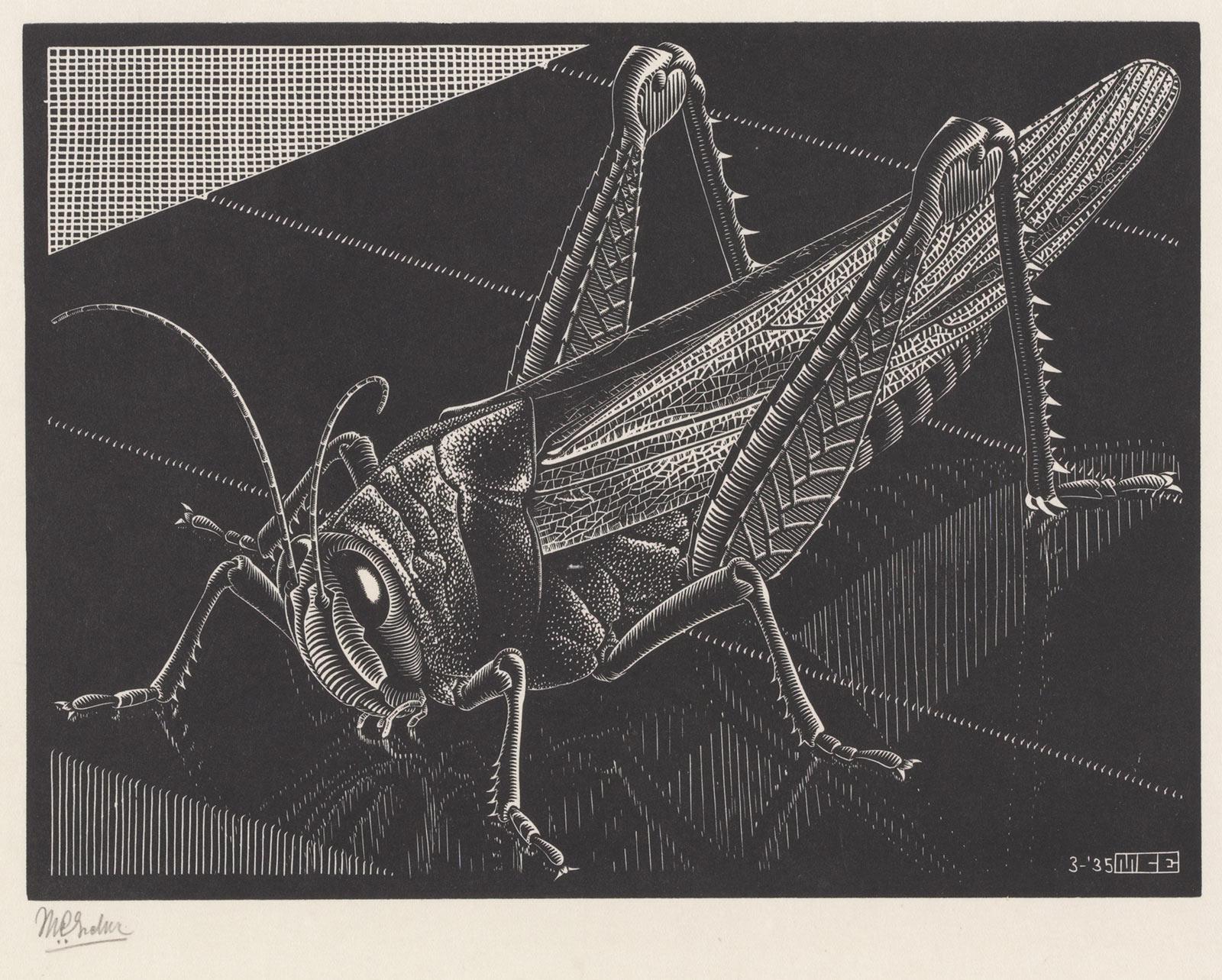

Between 1948 and 1954 Escher created a series of planetoids and stars. These celestial bodies all appear to be set in the same science fiction world, a world that at first glance seems alien to the earthly, austere artist. The series began with the wood engraving Stars, which features two chameleons interlocked in a system of regular octahedrons.
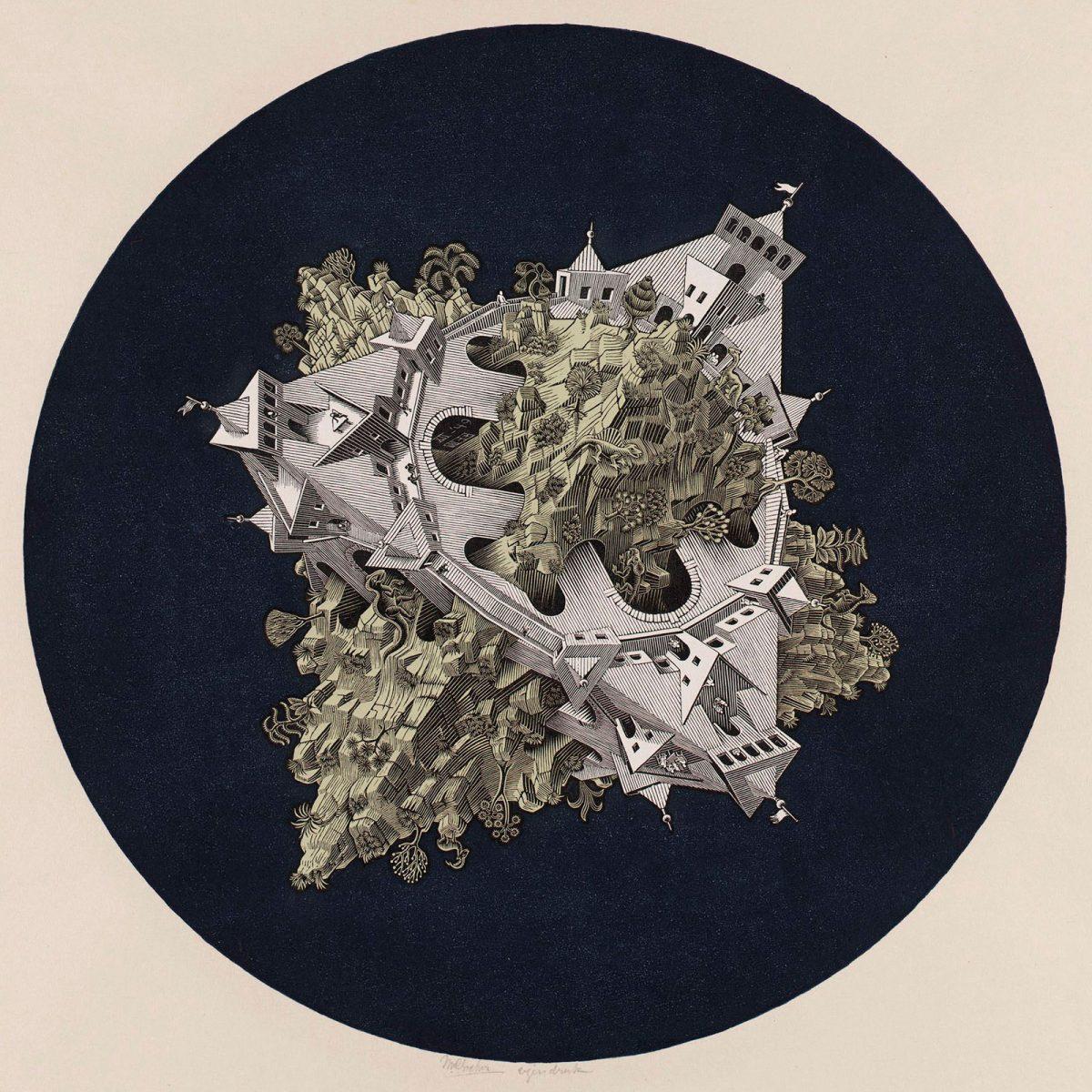
This was followed by Double Planetoid in 1949 and Tetrahedral Planetoid in 1954. Two amazing works in which Escher creates a complete alien civilisation. Through these science fiction worlds Escher explores the possibility of (as he puts it) combining different sources of gravity and perspectives in a visually credible way. Depicting these multiple sources of gravity in an extraterrestrial setting makes them seem more logical and more easily conceivable.
On Double Planetoid he writes:
'Two regular tetrahedrons that penetrate one another, float through space like a planetoid. The light-coloured one is inhabited by human beings who have completely transformed their region into a complex of houses, trees and roads. The darker tetrahedron has, of course, remained in its natural state, with rocks on which plants and prehistoric animals are living. The two bodies fit together to make a whole but they have no knowledge of each other.’
The two worlds are one but at the same time completely separate. The animal world, including a tyrannosaurus and a triceratops as well as an ibex, exists in a tree-covered and wild green rock world. The human world is interwoven through it, but the paths on which those people move are elevated above the wilderness. The animals in turn cross the human world through a series of caves and passages. It is an extremely ingenious construction, in which distance, perspective and gravity all seem to become relative
In this series, Escher makes the impossible acceptable and visible in an entirely logical way.
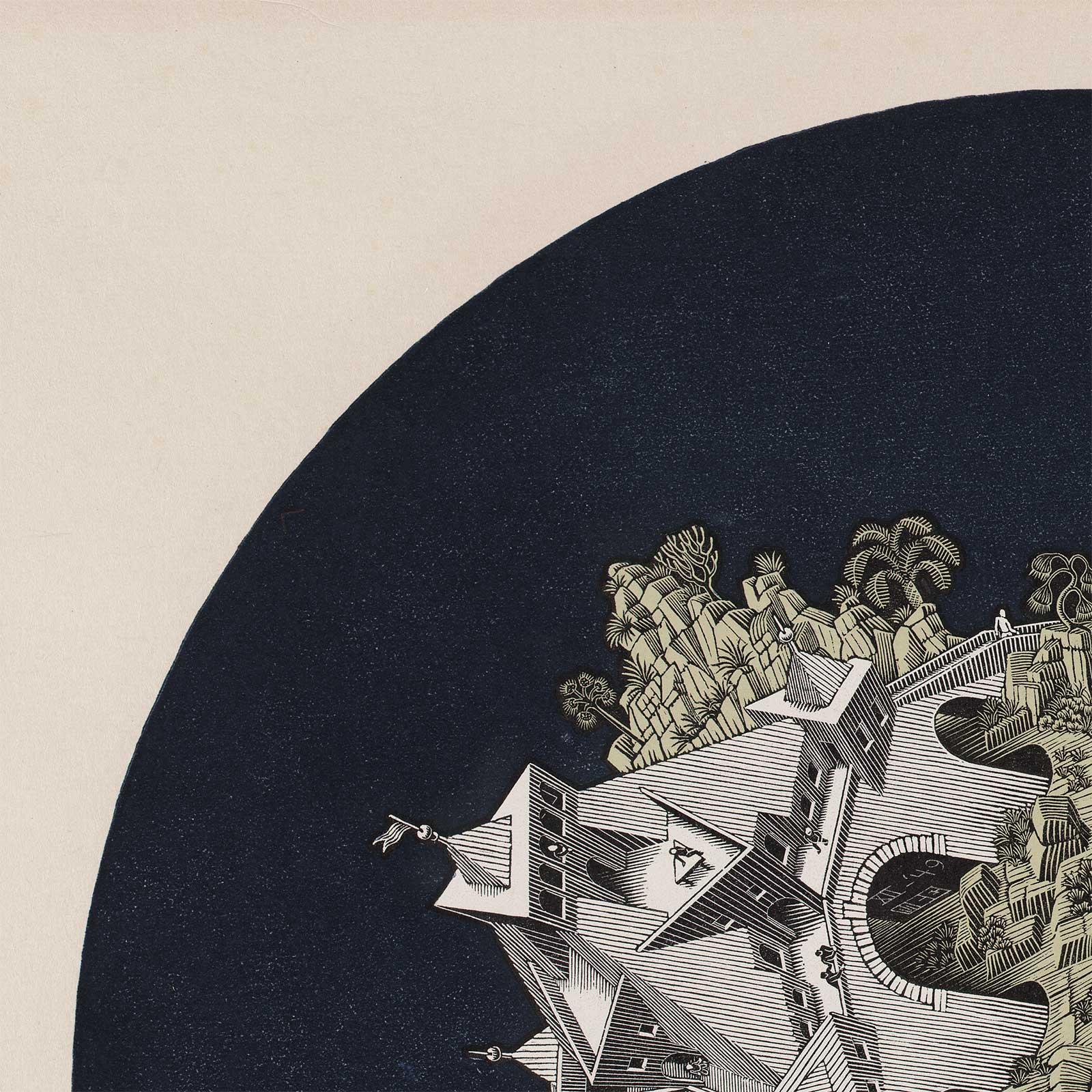
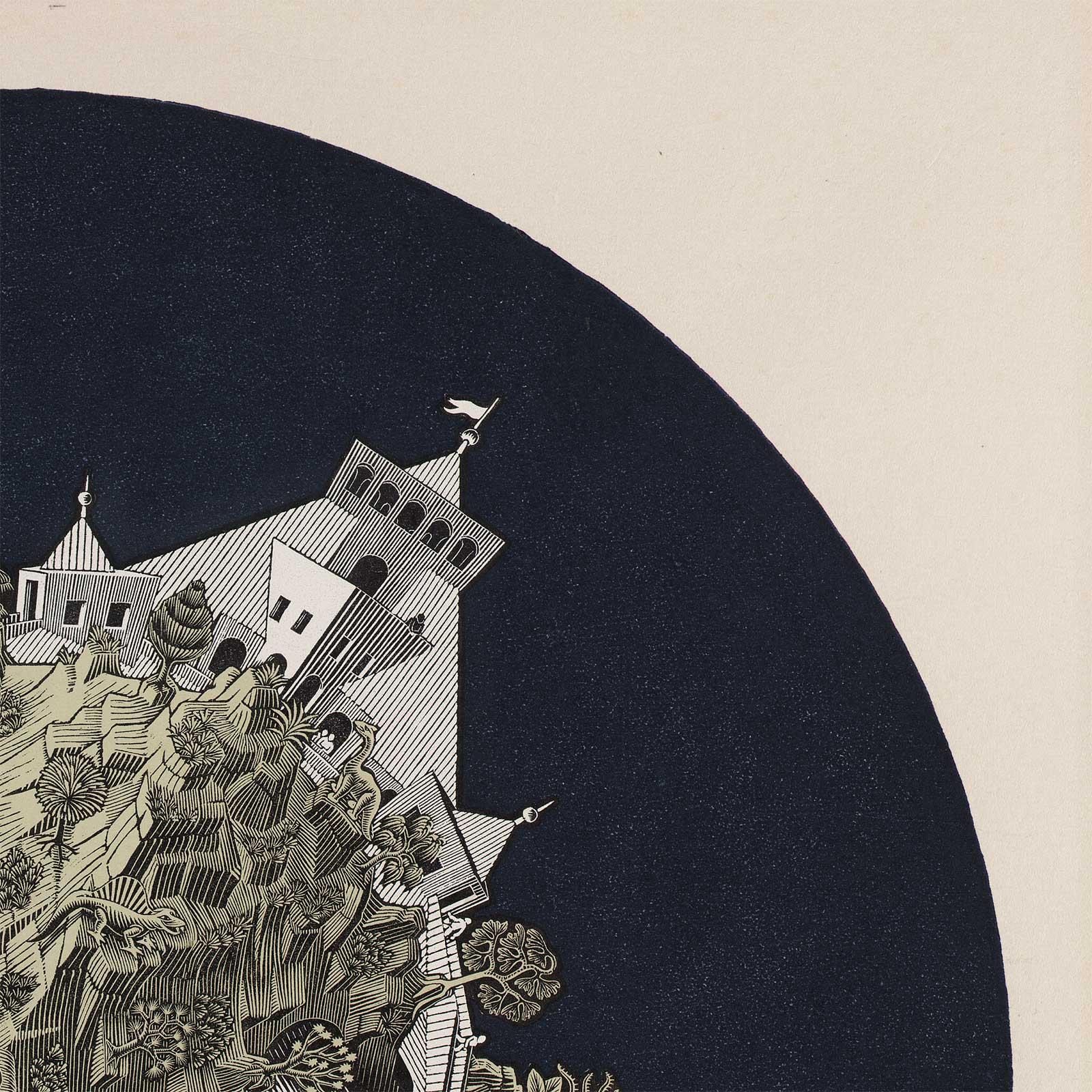
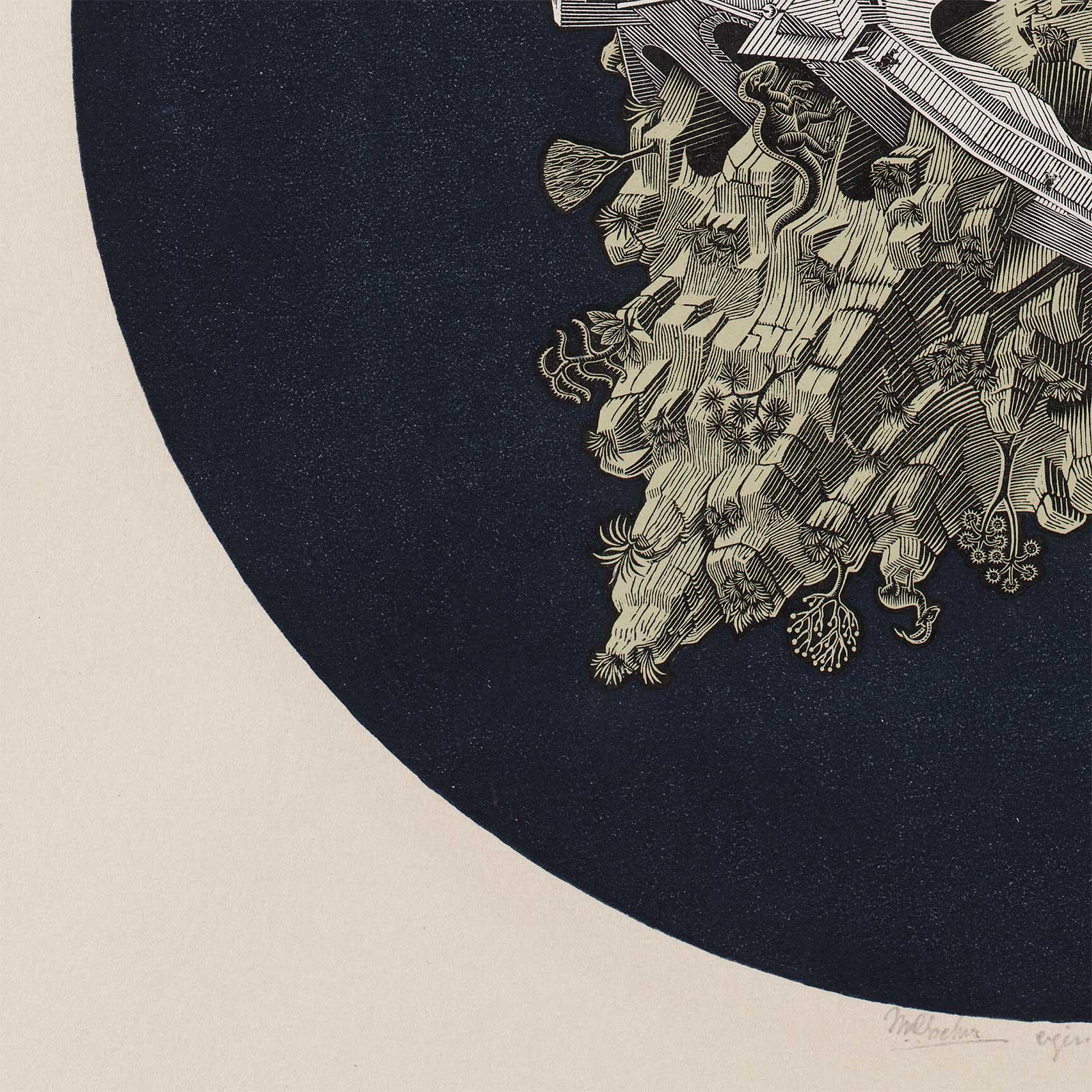
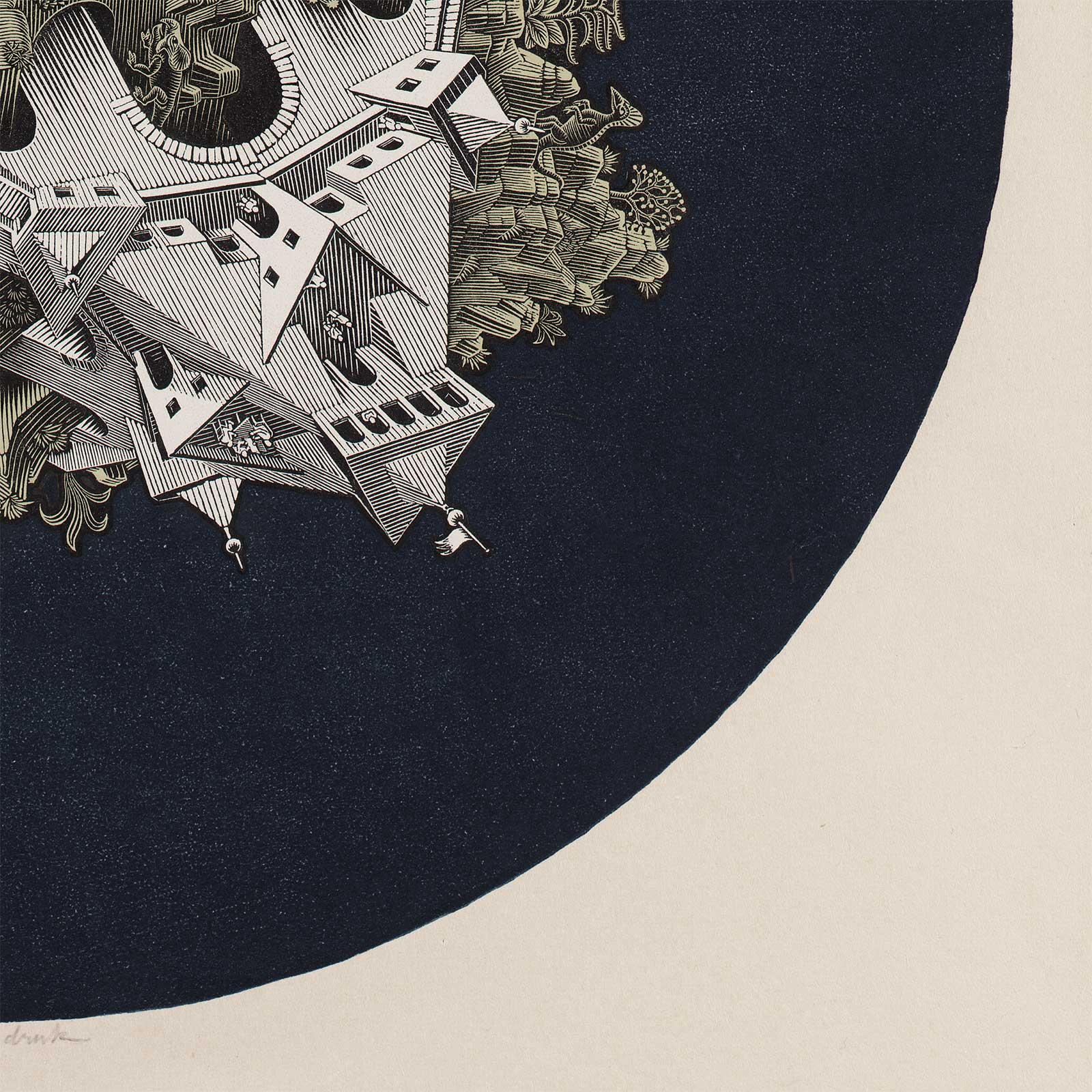
Source:
[*] [*] M.C. Escher, The Graphic Work, TASCHEN, 2001, page 13
More Escher today

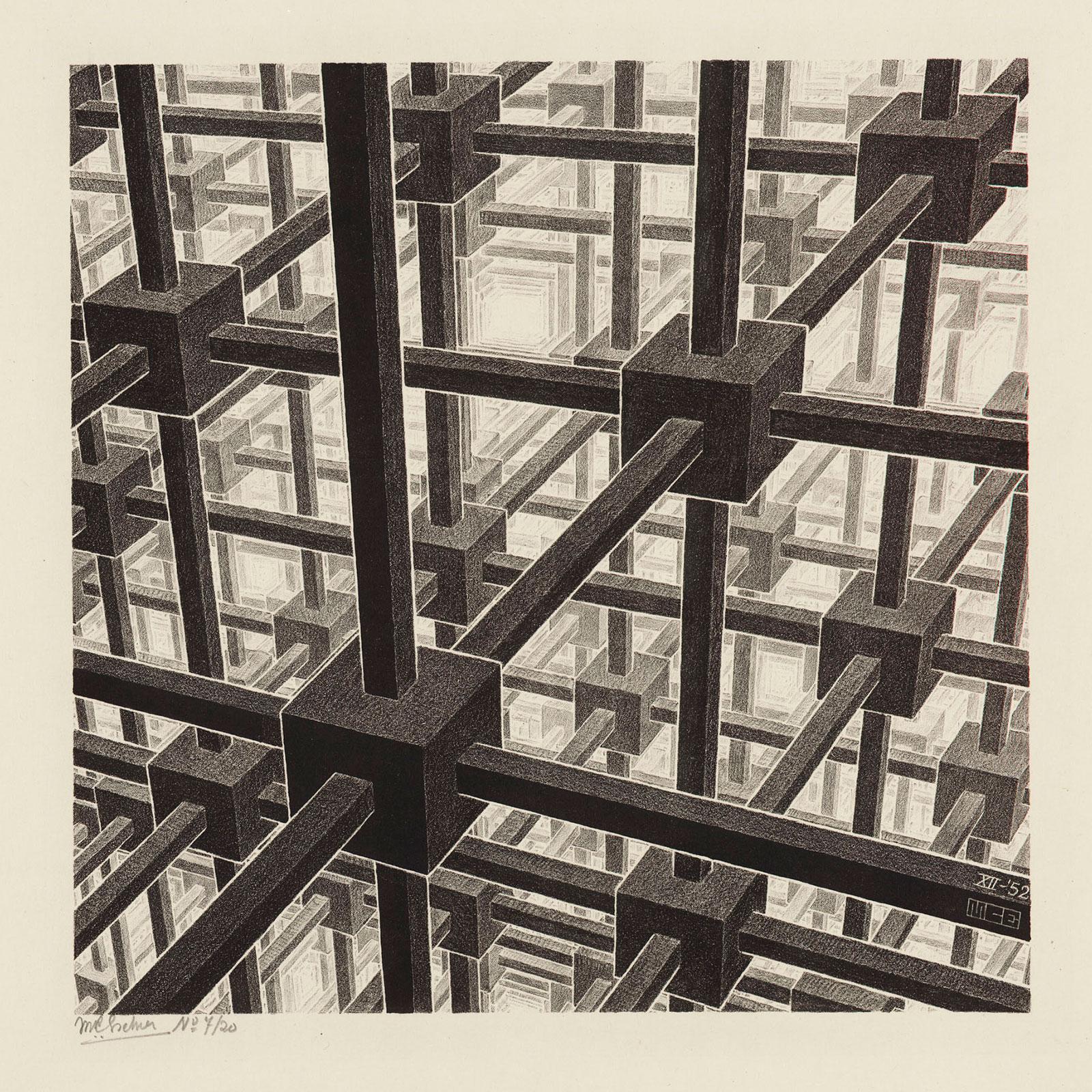
Cubic Space Division
